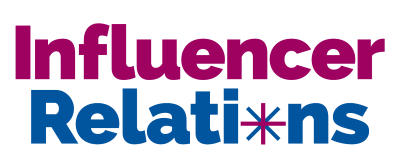This site’s ongoing comment war about Constellation Research has spotlit the firm’s use of a psychometric tool. Mark Talaba is Executive Vice President at The Gabriel Institute, the creators of the Teamability tool, sent this comment to Duncan Chapple by email, and permission to publish it here.
A friend forwarded ‘Debate:…Constellation?‘ to me, mainly because our product was indirectly (and incorrectly) mentioned in one of the comments.
But that’s not really why I’m writing.
I was dismayed by the disparaging commentary from readers, and I applaud your objectivity and clarity in distinguishing between the relevance of analyst turnover and the growing influence of Constellation.
Background
I met Ray Wang at an ERP conference in 2003 or ’04, where he took an interest in my company’s innovative data capture software. Many years passed with only an occasional email exchange. Then, when I mentioned the disruptive potential of a new ‘technology of teaming’ (Teamability®) he again displayed keen interest. We have worked closely with Constellation since 2011.
In any organization, there are many reasons for turnover: personal misfortune, job dissatisfaction, employee ‘poaching’, poor job-fit, retirement, and so on.
‘TechVeteran’ lists 22 people who cycled through Constellation. At least four were recruited-away to high-paying industry positions. Two simply retired. Three left to attend to family matters. Several had interesting backgrounds and Ray invited them to ‘try the Analyst route on for size’, but they voluntarily opted out after a short time. Three (that I know of) were, for very specific reasons, asked to leave.
So there’s no dark secret lurking behind the scenes at Constellation. I’d say it’s normal (perhaps even better than expected) turnover for a startup company with a novel operating and compensation model, that is breaking into a challenging field of endeavor.
Teamability is not a “specialized personality test”, nor does it “match aptitude”.
A Brief Overview of Teamability®
In 1984, two behavioral scientists – Dr. Janice Presser and Dr. Jack Gerber – set out to find an answer to the question “What really happens when people ‘team’ together?” Twenty-five years of research and testing, including nine years of software development, produced a technology engineered to identify and organize the ways in which people interact in teams.
This completely new ‘technology of teaming’ is not derived from personality or IQ testing, from EQ, strengths, or engagement surveys, or from any other familiar tools or methods. During the course of its development, Drs. Presser and Gerber discovered some very useful – and practical – elements of teaming, and of team management. They include:
- Role: a person’s affinity for specific modes of service to the needs of a team
- Coherence: expressed as positive, flexible, constructive teaming behaviors
- Teaming Characteristics: individual styles of responding and relating to others, subject to situational context
- Role-respect: the unique manner in which people of different Roles experience appreciation and respect
- Role-pairing: known, replicable synergies between specific Roles
- Role-fit: an appropriate match between a person’s Role and their assigned set of job responsibilities
- Team-fit: structuring a team to include the Roles that are best-fit to the team’s mission
This new way to know about teaming behavior was initially referred to as Role-Based Assessment (RBA). Formal research and field validation studies were conducted over a period of ten years, through three separate iterations of design and development. With each iteration, successively higher levels of correlation were found between the content of the reports and the observed workplace behavior of participants. As time passed, teaming technology and the Role-based approach to team management gradually merged into the single, simple concept of Teamability.
A most important aspect of Teamability is that it produces measurable business value. One compelling example is the SuperNova® prize for emerging technology, awarded by Constellation Research in 2011 to Preferred Sands – a $1 billion firm based near Philadelphia, PA. There, the use of Teamability resulted in rapid resolution of team performance problems, and the company’s 30% rate of new-hire turnover virtually disappeared. Business benefits have been further verified by the experiences and testimonials of managers, executives, and business owners in various market segments and functional areas of business, from startups to giant corporations and institutions.
Teamability®:
• the ability to connect with others to form a productive team
• the ability to communicate in a coherent manner with the intent to enhance team spirit
• the most prominent characteristic of a team member
• a set of predictive metrics encompassing one’s Role, Coherence, and Teaming Characteristics as defined by TGI’s Role-based approach
• a portfolio of new methods for selecting, developing, managing, and motivating individuals and teams
The Gabriel Institute was founded in 2001 to complete the evolution of the technology of teaming. Limited online use began in 2009, and general availability launched late in 2012. By the end of 2013, Teamability had matured into a comprehensive suite of teaming analytics and management methods, used by 300+ corporate, institutional, and non?profit organizations worldwide.


[…] PPPS A followup comment is here on Constellation’s use of psychometrics. […]
[…] market. DCG had prepared well because Connie Moore previously managed Constellation founder R “Ray” Wang when they both worked at Forrester, and they are close to hiring a remarkable business development […]